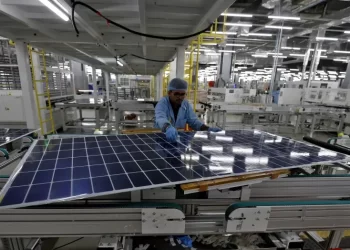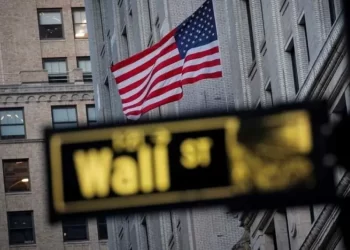NEW YORK (news agencies) — Forward Through Ferguson has made its mark on its community and the St. Louis region by focusing on justice and education, racial equity and policing reform.
The Missouri nonprofit was founded in 2015 to enact the societal changes outlined in the Ferguson Commission report to address the issues that contributed to the police shooting death of Michael Brown Jr. and the riots that followed in Ferguson, Missouri.
The new nonprofit and similar organizations looking to support the community saw money pour in from corporations like St. Louis-based Anheuser-Busch and major philanthropic organizations ranging from the Bill & Melinda Gates Foundation and the Robert Wood Johnson Foundation to the NBA Players Association Foundation.
It didn’t last, Annissa McCaskill, Forward Through Ferguson’s executive director, told media.
She doesn’t want to dwell on the negative because many have generously helped the organization. But she won’t forget the community group that pledged her nonprofit multiyear support and then decided after the first year that they didn’t want to pay anymore. “Our priorities have shifted,” the group said. Local companies that initially supported the group also stopped, “shifting priorities” again.
It’s not like her organization was ever getting the million-dollar donations that many businesses like to tout. In fact, experts say following where money from corporations and their foundations goes is very difficult.
“The largest donation we’ve ever gotten from a business is $210,000; the largest donation we’ve ever gotten from a foundation is $150,000,” said McCaskill, adding that those gifts and other high-profile ones followed the police killing of George Floyd in 2020.
Between those donations and the revenue the group is generating through racial equity training for government departments and businesses, Forward Through Ferguson was able to expand from five full-time employees to 10 employees last year.
“In many instances, it is piecemeal,” McCaskill said. “But when you put pennies in a jar, it starts to add up. Sure, I think, ‘How many things do I need to do in order to get this fund endowed for us to be able to have general operating money as opposed to being so program-specific?’”
That lament is common throughout philanthropy, especially among organizations that rely on public donations each year rather than those, like Ivy League colleges, for example, that have large endowments that generate steady annual income. It’s also not unusual for nonprofits to see a surge in giving while their cause, from protests to weather events, is in the spotlight, only to see donations quickly dry up.
However, the racial reckoning sparked in Ferguson was supposed to be different.
This story is part of an news agencies ongoing series exploring the impact, legacy and ripple effects of what is widely called the Ferguson uprising, sparked a decade ago by Brown’s death.
Emerson Electric, a Fortune 500 company headquartered 1 mile (1.6 kilometers) from where Brown was killed, announced its “Ferguson Forward” initiative a month after the protests. The initiative allocated about $4 million over five years to improve education, offer scholarships to colleges and trade schools and provide business development for people in the community, hoping other area companies would match it. In 2014, Emerson earned about $2.1 billion in profit on sales of $25 billion.
“Ferguson is our home and has been for the last 70 years,” Emerson Chairman and CEO David N. Farr said when announcing the plan. “We choose to be here and are committed to this community, especially now in its increased time of need. We believe in hope and opportunity and want to help remove barriers so that more of our neighbors can succeed.”
Experts say there is a wide variety of reasons companies get involved with community donations, from altruistic and civic-minded ones to business-related ones including employee retention and building a stronger customer and employee base.
Recent trends suggest more corporations are providing goods and services at a reduced rate in addition to donations, rather than solely giving money to communities, said Kari Niedfeldt-Thomas, managing director and chief operations officer for Chief Executives for Corporate Purpose, a coalition that advises companies on sustainability and corporate responsibility issues.
According to CECP research, a wide-ranging definition of giving including volunteerism, community donations and providing services and products to nonprofits has jumped from 24% of a company’s overall corporate or social responsibility budgets in 2021 to 35% of those budget in 2023, Niedfeldt-Thomas said.
But the current backlash against anything that could be perceived as a diversity, equity or inclusion program is making it more difficult to measure corporate commitments, even if companies are dedicating more resources toward them, she said.
“I would say that we’re seeing fewer public companies feeling that they have to call that out,” she said.
Earl Lewis, a professor and director of the Center for Social Solutions at the University of Michigan, found that lack of transparency especially striking after the outpouring of corporate pledges and statements following the murder of George Floyd in 2020.









